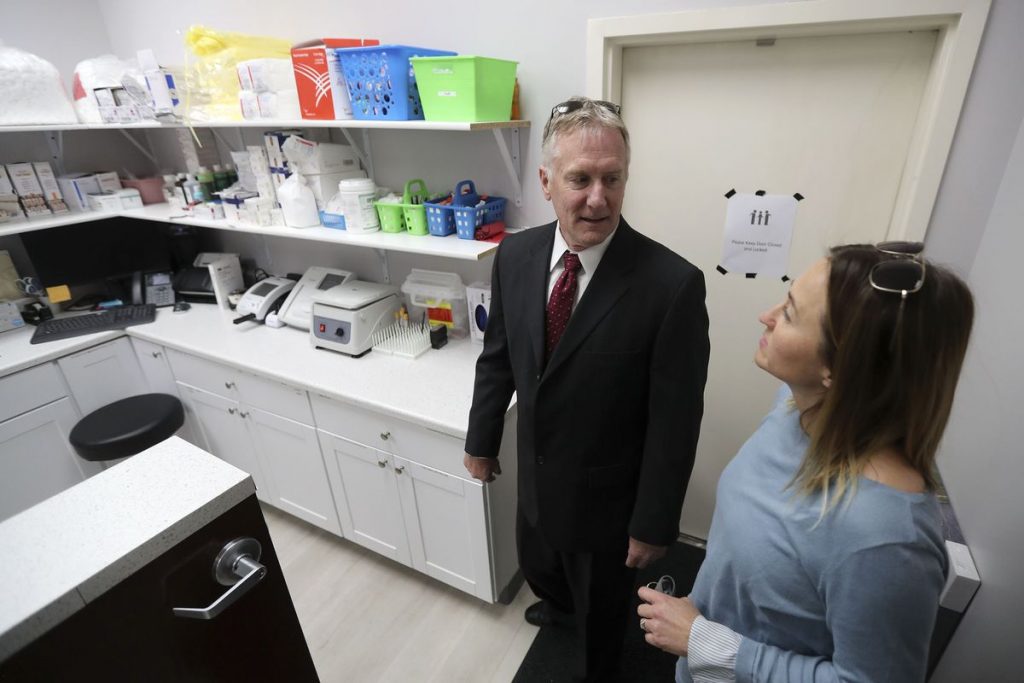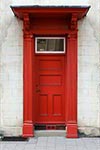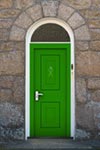WEST JORDAN, UT | by Wendy Leonard | November 17, 2019
Original article can be found at: https://www.deseret.com/

WEST JORDAN — Utah’s community health centers exist to provide health care to the state’s underserved populations — to fill the gaps in Utah’s health care system — but what’s more is that anyone can use their services.
The centers, which operate 57 clinics in urban and rural communities across the state, provide care to more than 170,000 Utahns with over 500,000 patient visits each year. It’s a service many can’t live without, but anyone in Utah can benefit from the efficient, high-quality service the clinics provide, providers say.
And with a new clinic recently opened in West Jordan, even more patients can be served.
“There is a huge demand for people who don’t have access to health care and we exist to remove the barriers they face,” said Kurt Micka, executive director for Utah Partners for Health, which operates the new clinic at 9103 S. 1300 West, in West Jordan, under a partnership with the Association for Utah Community Health. The most common barriers include lack of sufficient income to cover medical costs, cultural or language issues, lack of transportation or no health insurance.
The goal, set forth by the U.S. Health Resources and Services Administration that regulates clinics across the country, is to provide high-quality primary and preventive care to everyone, regardless of their ability to pay.
“Because it is made available to them, any care they get, they are super grateful for it,” Tony Gregory, a physician assistant at the new clinic in West Jordan, said about the patient population he serves. “It’s not uncommon for them to give hugs, even cry, they’re so grateful. It’s pretty rewarding and amazing to be a part of that.”
But just because the clinics provide a service for the poor, the quality doesn’t pale in comparison to larger health care systems in the state, an advocate notes.
“Sometimes people assume that because of the populations we serve, that the quality is less than that of other, more mainstream systems,” said Alan Pruhs, executive director at the Association of Utah Community Health. “We’ll put our outcomes up against anybody … they’re just as good, if not better.”
He said the clinics are held to high standards and with board-certified clinicians “who really want to drive good outcomes.”
Health center clientele can, however, be even more complex than that at traditional clinics, Pruhs said.
In addition to a full range of medical services, some of the clinic locations provide dental, vision and behavioral health options for patients. On-site case managers also work with patients on particular social determinants of health, including food insecurity, legal or housing issues.
“If you’re not eating, you really don’t care about your possible skin condition,” Micka said.
Pruhs adds: “You try eating healthy on a fixed income or a limited budget for food.”
It’s not easy, he said, but the health centers counsel and provide additional resources where they can, including serving as a referral base for Intermountain Healthcare, which partners to provide necessary specialty care at a lower cost or sliding scale for patients.
The collaborative service offered makes a real, notable difference to the population the clinics serve, as for many, it’s the only care they can get.
Because the clinics receive some federal funding, they are required to report various health measures, including health outcomes for patients served. Micka said more than 81% of Utah Partners for Health patients, most of whom are treated regularly for chronic health issues like diabetes and high blood pressure, are in control of their condition.
“We motivationally interview them — asking them what they want to do to take care of their health,” he said. “Do they want to eat better? Exercise? What could they do to better their health or whatever condition they might face.”
In his private family practice experience, Gregory said he would often see 25 to 35 patients a day. At the clinics he works, however, it’s more like 13 to 16, because focus is placed on time spent with patients.
“We have a focus on being a patient-centered, medical home,” he said. “We try to educate them and talk extensively. And, together, we make decisions on their health.
“By giving them a little of that control … it gives them the opportunity to make choices they’re more likely to adhere to at home,” Gregory added. “It makes them more compliant.”
Patients seen at community health clinics are often not originally from Utah. So staff are required to speak Spanish and English, and other translation services are provided for more than 185 languages, Micka said. It’s especially important with medical terminology that patients understand what they’re dealing with.
Eighty percent of the clinic clientele are uninsured, and 65% are at or below the federal poverty level, which emphasizes the growing need for health care alternatives in Utah.
Micka opened the new West Jordan clinic without help from the federal government, taking a gamble on the area, knowing it was a place that needed access to primary care.
It is densely populated and houses a lot of low- to moderate-income people with unmet health care needs, Pruhs said. Not to mention, he said, an incredible and growing shortage of primary care providers.
“Access to primary care across the state of Utah is limited,” he said, adding that with population growth, Utah has one of the higher primary care shortages in the country.
The new clinic offers five patient rooms that will allow for more efficient use of provider time, increasing the number of patients who can be seen. Micka said he aims to expand the location to include dental and behavioral health services.
“At a time when people worry about getting access to care, as well as being able to pay for that care, your effort is just what the doctor ordered,” said U.S. Rep. Ben McAdams, D-Utah, who spoke at the opening of the new clinic on Nov. 1.
Dental services, which for the time being are only available at the Mid-Valley clinic, have a six-month wait list.
It’s because the service offered is efficient and inexpensive, but a lot of people seen at the clinic “have never seen a dentist,” Micka said.
“We try to teach them oral health prevention … and having that, it really just changes their whole outlook on life,” he said.
Another perk of community health centers is that any medication prescribed by a community health care provider is price-locked by the federal government, which saves patients money every month. The 340B drug pricing program contained in the U.S. Public Health Service Act requires drug manufacturers to provide certain drugs to eligible organizations and entities at significantly reduced prices.
McAdams said community health centers help keep people out of emergency rooms, which saves time and money and stress for families and communities. It’s “a service they could not receive anywhere else.”
Clinics like the one in West Jordan, he said, “are part of the health care puzzle we are working so hard to solve.”
The whole system, McAdams said, works better when it is focused on prevention and wellness, which is the focus of community health centers.
Share this Post













